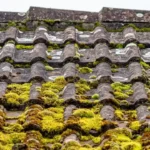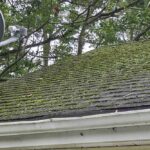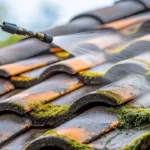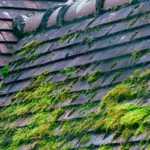In recent years, there has been a growing interest in the intersection between green roofs and urban wildlife. As cities expand, the natural habitats of various species are often disrupted. However, green roofs present a unique opportunity to create new habitats, fostering biodiversity in urban areas. In this article, we explore how these innovative structures benefit both humans and wildlife, and the potential they hold for our future cities.

What Are Green Roofs?
Green roofs are rooftops that are partially or completely covered with vegetation. They consist of several layers, including a waterproofing membrane, a drainage system, and a growing medium. This design allows for the cultivation of plants on building tops, transforming typically barren spaces into lush, green environments.
Types of Green Roofs
There are two main types of green roofs: extensive and intensive. Extensive green roofs are lightweight and require minimal maintenance, making them suitable for a wide range of buildings. Intensive green roofs, on the other hand, are heavier and can support a wider variety of plant species, including trees and shrubs.
Benefits of Green Roofs
The benefits of green roofs extend beyond aesthetics. By absorbing rainwater, they reduce runoff and help manage stormwater in urban areas. Additionally, they provide insulation, reducing energy consumption and lowering heating and cooling costs for buildings. For more insights on how green roof insulation benefits energy efficiency, visit Roof Home.
Green Roofs and Climate Change
With the increasing threat of climate change, green roofs offer a sustainable solution for cities worldwide. By capturing and storing carbon dioxide, they contribute to reducing the urban heat island effect and improving air quality.
Urban Wildlife and Its Importance
Urban wildlife refers to the species that adapt to and thrive in urban environments. This includes birds, insects, and small mammals. The presence of urban wildlife is crucial for maintaining ecological balance and supporting biodiversity within cities.
Challenges for Urban Wildlife
Urban wildlife faces numerous challenges, including habitat loss, pollution, and human-wildlife conflict. As natural habitats are replaced by concrete structures, many species struggle to survive in urban settings.
Green Roofs as Habitats for Urban Wildlife
Green roofs serve as vital habitats for a variety of species, providing food, shelter, and breeding grounds for urban wildlife. By supporting a diverse range of plants, they attract pollinators like bees and butterflies, as well as birds and small mammals.
Case Studies: Successful Green Roofs
Several cities have successfully implemented green roofs to enhance urban wildlife. For instance, in Switzerland, a green roof project increased bird species by 30% within a year. In New York City, green roofs have been instrumental in supporting the local bee population.
Designing Green Roofs for Wildlife
To maximize the benefits for urban wildlife, green roof designs should incorporate native plant species and provide diverse microhabitats. This encourages a wider range of species to use the space and enhances the overall biodiversity of the area.
Considerations for Successful Implementation
Successful implementation of green roofs requires careful planning and consideration of factors such as plant selection, soil depth, and drainage. For guidance on selecting the right green roof soil mix, refer to Roof Home’s comprehensive resources.
The Future of Green Roofs and Urban Wildlife
As cities continue to grow, the integration of green roofs will play a crucial role in supporting urban wildlife and promoting sustainability. By creating green spaces in urban environments, we can foster biodiversity and improve the quality of life for both humans and wildlife.
Innovations in Green Roof Technology
Advancements in green roof technology are continually being made, offering new opportunities for enhancing urban ecosystems. Modular systems, for example, make it easier to install and maintain green roofs. Discover more about modular green roofing solutions at Roof Home.
Conclusion
The synergy between green roofs and urban wildlife represents a promising step towards creating more sustainable and livable cities. By embracing this innovative approach, we can nurture urban ecosystems and ensure a thriving environment for future generations.

FAQs
Are green roofs expensive to maintain?
While the initial installation of a green roof can be costly, maintenance costs are generally low, especially for extensive green roofs. They offer long-term savings through reduced energy costs and increased roof lifespan.
Do green roofs help with energy efficiency?
Yes, green roofs provide insulation, reducing the need for heating and cooling. This leads to significant energy savings for buildings.
Can green roofs support larger wildlife?
Intensive green roofs can support larger wildlife, such as birds and small mammals, by providing food and habitat. However, the design should consider the specific needs and behaviors of the target species.
This article contains affiliate links. We may earn a commission at no extra cost to you.








